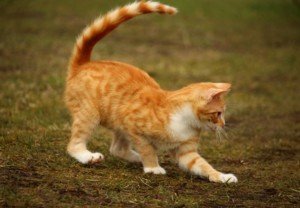
If you think your cat’s tail is double-jointed, here is what a veterinarian says about this observation.
Have you ever looked at your cat’s tail and thought, “Hmm, it has to be double-jointed — or can it be?”
“There actually are no ‘joints’ in a cat’s tail, so while they may seem very flexible, they are not technically double-jointed,” says Dr. Jules Benson, BVSc, chief veterinary officer with NationwideDVM, a pet insurer company.
Anatomy
“A cat’s tail is a continuation of her spine, containing caudal vertebrae, as well as voluntary muscle, with ligaments and tendons holding the muscles and bone together,” explains Dr. Benson.
As a result, this configuration, as Dr. Benson puts it, enables a cat’s tail to be incredibly expressive, creating the illusion that it is double-jointed.
How can you tell if the tail is broken?
It can become injured or broken from different types of trauma. For starters, pulling on it too hard (as children — and even adults — may be inclined to do) can cause injury.
An obvious cause of injury would be if the tail was accidentally slammed in a door or window. Trauma could also occur if it is run over by a car or bicycle.
“Common signs of an injured or broken tail could be the cat carrying her tail low or dragging it, and minor incontinence,” explains Dr. Benson.
An injury can easily be determined with an X-ray, says Dr. Benson. Treatment will vary and is determined by the extent of the injury.
Dr. Benson explains that in the case of a broken tail, the treatment is often amputation just above the location of the break, and “once the surgery site is healed, these cats lead normal lives with bobbed tails.”
If your cat seems to be treating her tail strangely, and you should take your pet to your veterinarian for an exam and diagnosis.












